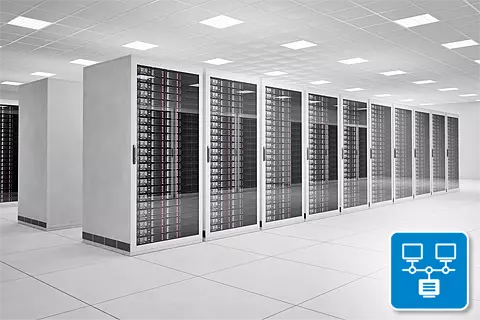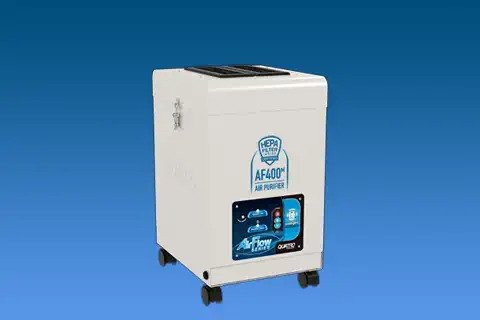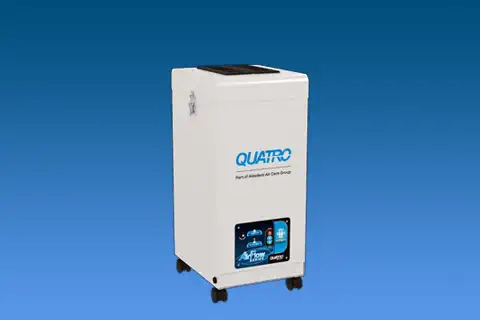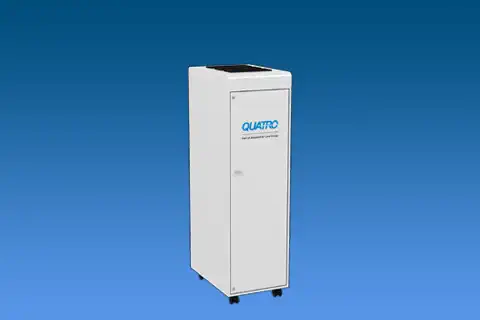Data Centers
Overview
 Data centers are physical facilities where businesses and other organizations can safely store, process and disseminate their data and applications. Consisting of a network of computing and storage resources, data centers allow for the delivery of shared information and applications.
Data centers are physical facilities where businesses and other organizations can safely store, process and disseminate their data and applications. Consisting of a network of computing and storage resources, data centers allow for the delivery of shared information and applications.
Providing the essential service of housing an enterprise’s critical data and applications, data centers need the security and reliability of their facilities to remain consistent. While other industries may monitor indoor air quality (IAQ) in an effort to maintain the health and wellbeing of its clients and employees, data centers are more concerned with how airborne contaminants could affect the functionality of their computer systems. Because their clients rely so heavily on the dependability of their services to operate on a daily basis, data centers cannot afford to allow gasses, dust or pollen to impair their machines.
Air Quality Challenges
Data centers function 24 hours a day, 7 days a week. Built with many different components working in unison, even one interruption or malfunction could disrupt the whole system causing suspensions in their services and damage to their machines.
To extend the life of IT equipment, data centers need to ensure the IAQ is up to standard in their facilities. If located in a heavily polluted city, this task can be a challenging one. Contaminates, either originating from outdoors or indoors, have the potential to break down computer circuitry, corrode metal and cause malfunctions in the electricity flow. These electrical disruptions can lead to blackouts or even burn out electronic components by diverting electricity through the wrong circuit.
Some of these contaminants infiltrate from outdoors while others come from inside the facility. Outdoor particulates can seep in through air filters and conditioning systems or be carried in by the clothing, hair or skin of employees. Indoor contaminants usually come from equipment processes inside the center such as particles created by Computer Room Air Handler (CRAH) units.
The most common contaminants that adversely impact the functionality of IT equipment at data centers include:
- Corrosive Gas
- Dust
- Ferrous Metal Particles
- Chlorides or Salts
Corrosive Gas
One of the most common contaminants that threaten data centers, corrosive gas usually seeps into data centers through air conditioning systems. These gasses can corrode silver and copper as well as the fine metal parts and wiring in modern circuit boards and chips. Sulfur dioxide, hydrogen sulfide, nitrogen dioxide, chlorine, bleach fumes and ozone are all corrosive gasses.
Dust
Dusts of various kinds also have the potential to cause havoc for the IT equipment at data centers.
Unsealed concrete at the facility is a big concern as it emits fine dust into the air. That dust is made up of materials such as silica and calcium which have abrasive and corrosive properties.
Electrostatic-charged dust coming from clothing, cardboard and paper can be problematic for servers as they can cause faulty commands, data loss and resets.
Ferrous Metal Particles
Printers, tape drives, worn parts in HVAC units, new floor tiles and conduit pipes create ferrous metal particles. These particles are conductive and can cause electrical damage to circuit boards.
Chlorides or Salts
A leading cause of corrosion, salts can deteriorate electronic components in data centers. Facilities located near coastal areas or in heavily polluted cities need to be most cautious as pollution can accelerate the accumulation of salt in the air. Wintertime in cold climates also can pose a problem as workers may track in salt used to melt snow and ice.
Solutions for Data Centers
To extend the life of IT equipment and provide continuous service to clients, addressing IAQ in data centers is a must. A custom designed, multi-stage air purifier system is an effective way to protect data facilities from hazardous airborne contaminants.

AF 400M
HEPA Air Purifier
A portable air purifier for localized chemical, odor and particle removal. 300 nominal CFM.
Get Product Details
AF 400
HEPA Air Purifier
Compact and powerful, the AF400 is ideal for localized chemical, odor and particle removal. 300 nominal CFM.
Get Product Details
AF 1000
HEPA Air Purifier
Enhanced protection against airborne pollutants including chemicals, gases, odors and particles. 600 nominal CFM.
Get Product Details
AF 2000
HEPA Air Purifier
Designed to handle high concentrations of chemicals, gases, odors, particles and biological contaminants. 1000 nominal CFM.
Get Product Details